The big story in Los Angeles on August 12, 1969 was the release of nineteen-year-old William Garretson, the caretaker at the Cielo Drive estate where five people and the unborn son of Sharon Tate and Roman Polanski murdered a few days before.
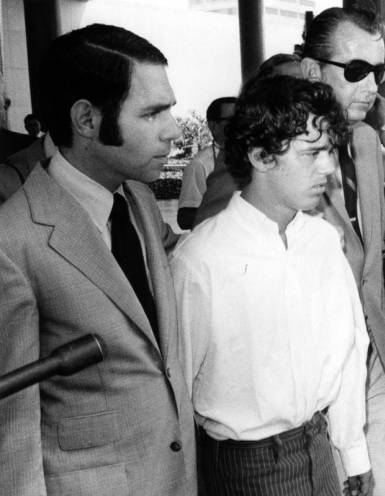
William Garretson (center)
William was the only survivor of the slaughter which made him suspect number one. Police arrested William at the point of a shotgun and grilled him for hours. He agreed to take a polygraph test and passed. Inspector Harold Yarnell said: “There is not sufficient evidence to hold Garretson. There is no reason to suspect him.”
Wearing a deer-in-the-headlights expression, William’s attorney, Barry Tarlow, escorted him through the lobby of LAPD’s administration building. The nineteen-year-old, who appeared on the verge of tears, declined to answer any of the barrage of questions called out to him by eager news reporters. He let his lawyer do the talking.
Tarlow told reporters his client said goodnight to Steven Parent at 11:30 p.m. Friday, then went back inside the guesthouse to listen to his stereo. He wasn’t aware of anything until LAPD officers kicked in his door and took him away on Saturday morning.
William shared an address with Sharon Tate and Roman Polanski, but they lived on different planets. Sharon and Roman were in the movie industry; they were among the “beautiful people.” Roman’s big break came in June 1968 with the release of “Rosemary’s Baby.” His career as an A-list director was underway.
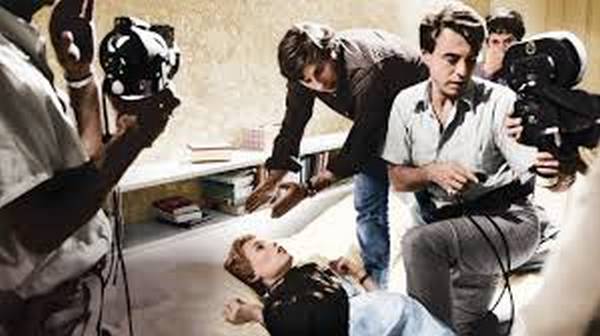
Still a teenager, William wasn’t sure what he wanted out of life. He spoke to his mother of an interest in acting, but his aspiration was as common as a cold and easier to catch when living in L.A. Thousands of young people flock to the city seeking stardom – they have been coming here since the 1910s. Far from hanging out with the beautiful people, William had more in common with “Hollywood Blvd drifters, hitchhikers, and drugstore cowboys,” many of whom he brought home with him when they needed a place to crash.
Police wanted to speak to members of both groups – killers defy social strata. William offered names of people he knew, but he didn’t believe any of them capable of the murders.
William’s release featured prominently on the front page of the Los Angeles Times, but there was another intriguing and disturbing story on page 3. The double murder in Los Feliz of Leno and Rosemary LaBianca.
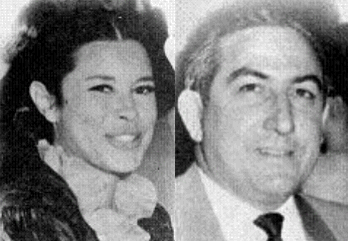
Leno, 44, and Rosemary, 37, were stabbed to death Sunday in their home at 3301 Waverly Drive. The killing of the couple was similar in many to ways to the murders of Sharon Tate and her friends on Saturday. Police Sergeant Bryce Houchin said, “There is a similarity in the slayings. But whether it’s the same suspect or a copycat, we just don’t know.”
Sgt. Houchin appeared open to the idea that the murders could be connected, but in their official statements LAPD wouldn’t go that far.
On August 12, 1969, reporter Bruce Russell wrote:
Whispers that a psychotic killer was after wealthy resident of isolated homes in the Hollywood hills continued after the murder of Miss Tate and the four others was followed a day later by that of a rich supermarket owner and his wife in a plush home 12 miles away.
IN BOTH SETS of slayings the word “Pig” was smeared in blood at the murder scene, hoods covered the heads of males slain and women had cords around their throats.
Police have showed that the two bloodbaths were unconnected. They said the more recent murders of a grocery chain owner Leno La Bianca, 44, and his wife Rosemary, 37, were those of a psychotic cashing in on the publicity of the so-called Tate murders.
But fear-stricken Hollywood residents rushed to buy guns yesterday for self-protection.
Hollywood glitterati panicked. They ripped the names and numbers of their drug dealers out of their little black books and waited for the killer’s arrest so life could return to normal.
No one, except some Los Angeles County Sheriff’s Department homicide investigators, gave a thought to the gruesome killing that pre-dated the August rampage, the murder of Gary Hinman.




 In October 1969 Susan Atkins, aka Sadie Mae Glutz, was booked on the Gary Hinman murder, moved to Sybil Brand Institute (SBI) the women’s jail for Los Angeles County, and assigned to Dorm 8000. She created a stir. She had that ridiculous alias and insisted on being called Crazy Sadie. If she hadn’t given it to herself, she would have earned the nickname—the other inmates thought she had a screw loose. She seemed happy to be in jail and would sometimes sing or start go-go dancing. Odd behavior in lock-up.
In October 1969 Susan Atkins, aka Sadie Mae Glutz, was booked on the Gary Hinman murder, moved to Sybil Brand Institute (SBI) the women’s jail for Los Angeles County, and assigned to Dorm 8000. She created a stir. She had that ridiculous alias and insisted on being called Crazy Sadie. If she hadn’t given it to herself, she would have earned the nickname—the other inmates thought she had a screw loose. She seemed happy to be in jail and would sometimes sing or start go-go dancing. Odd behavior in lock-up. Virginia and Ronnie were accustomed to being locked up with women who committed non-violent crimes. Crazy Sadie’s attitude toward murder, even the murder of a woman 8 ½ months pregnant, was an anathema to them.
Virginia and Ronnie were accustomed to being locked up with women who committed non-violent crimes. Crazy Sadie’s attitude toward murder, even the murder of a woman 8 ½ months pregnant, was an anathema to them.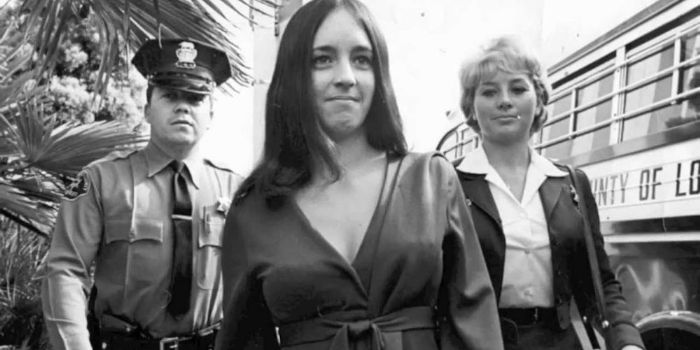 Before you get in a twist about Atkin’s right to privacy, she gave that up as soon as she got to lock-up. If she insisted on running her mouth, every word she uttered was fair game and could later be used against her. Bad news for Sadie. Great news for the law.
Before you get in a twist about Atkin’s right to privacy, she gave that up as soon as she got to lock-up. If she insisted on running her mouth, every word she uttered was fair game and could later be used against her. Bad news for Sadie. Great news for the law.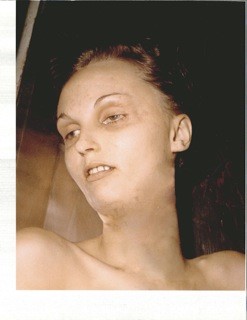 Prior to her bone-headed decision to pull back from being the key witness for the prosecution, Susan over shared with anyone who would lend her an ear to garner favor. She revealed to a TV news team the approximate location of bloody clothing discarded following the Tate murders. The crew found three black t-shirts, one white t-shirt and three pairs of black jeans worn by the killers. Also found was the long barreled .22 caliber gun used to kill three of the victims.
Prior to her bone-headed decision to pull back from being the key witness for the prosecution, Susan over shared with anyone who would lend her an ear to garner favor. She revealed to a TV news team the approximate location of bloody clothing discarded following the Tate murders. The crew found three black t-shirts, one white t-shirt and three pairs of black jeans worn by the killers. Also found was the long barreled .22 caliber gun used to kill three of the victims.

